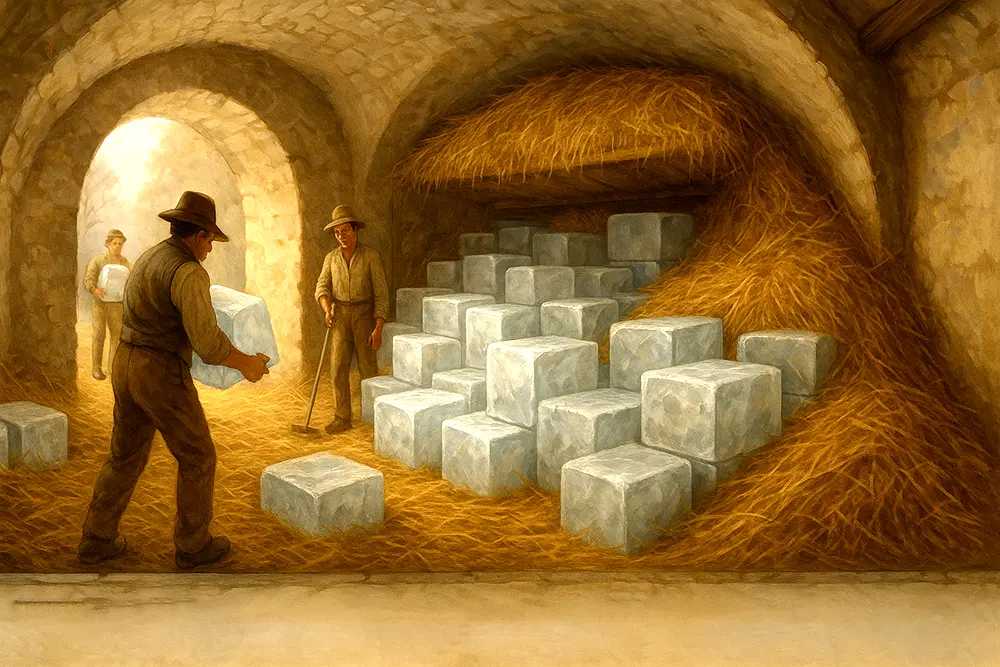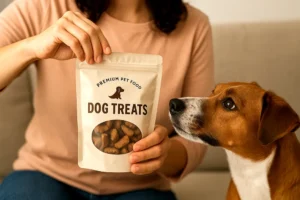Refrigerator History and Business Guide
From ice pits to eco-friendly cooling
-
What it is: A machine that removes heat from a closed space to keep food fresh.
-
Big leaps: Vapor-compression (1830s) → safe refrigerants (1930s) → energy labels (1990s) → low-GWP gases + inverter compressors (2000s–today).
-
Why it matters: Food safety, longer shelf life, global cold chains, and energy bills at home.
“Refrigeration didn’t just cool kitchens—it unlocked modern food safety, logistics, and global trade.”
1) Before machines
-
Icehouses & snow pits: Ancient civilizations stored winter ice underground with insulation.
-
Evaporative cooling: Porous earthen pots let water evaporate and draw out heat—early “no-electric” cooling.
2) Science sets the stage (1700s–1800s)
-
Lab insight: Evaporating a liquid under lower pressure absorbs heat.
-
1834–35: Jacob Perkins patents and demonstrates vapor-compression refrigeration—the same cycle your fridge uses today (compress → condense → expand → evaporate).
-
1851: John Gorrie patents a mechanical ice maker to cool hospital rooms in hot climates.
3) Industry scales up (1870s–1900s)
-
1876: Carl von Linde builds reliable ammonia systems for breweries and meat packing—replacing the risky “natural ice” supply.
-
Cold rooms spread to ships, rail, and warehouses → the modern cold chain is born.
4) Home refrigerators arrive (1900s–1930s)
-
Early home units were pricey and used hazardous gases (ammonia, SO₂, methyl chloride).
-
1927: GE’s Monitor-Top brings sealed, dependable home refrigeration to the middle class.
“A sealed system and safer refrigerants turned the fridge from a luxury into a must-have appliance.”
5) Safer refrigerants, then climate concerns (1930s–1990s)
-
CFC ‘Freon’ era: Non-flammable and effective, CFCs replaced toxic gases and helped refrigerators spread worldwide.
-
Ozone shock: CFCs were later found to deplete the ozone layer → 1987 Montreal Protocol phased them out (then HCFCs). Many markets shifted to HFCs (no ozone harm but high global-warming potential).
6) Today’s refrigerator (2000s–now)
-
Motors: Inverter/variable-speed compressors cut energy use and noise.
-
Refrigerants: Lower-GWP choices (e.g., isobutane R-600a, some HFOs) in many regions; industrial plants still use ammonia for efficiency with strict safety.
-
Design: Better insulation, smarter defrost, door alarms, air-flow channels, antibacterial liners, app control.
7) How a fridge works (simple)
-
Compressor squeezes refrigerant gas → heats it.
-
Condenser coils release heat; gas becomes liquid.
-
Expansion device drops pressure → liquid cools.
-
Evaporator coils absorb heat from the cabin → air gets cold.
-
Refrigerant returns to the compressor and repeats.
8) Quick comparison table
| Era | Common Refrigerant | Safety & Environment | Typical Use | Notes |
|---|---|---|---|---|
| 1920s–30s | Ammonia, SO₂, Methyl chloride | Toxic/irritant | Industrial & early home | Shifted away in homes due to safety |
| 1930s–80s | CFCs (Freon) | Ozone-depleting | Home & commercial | Phased out by Montreal Protocol |
| 1990s–2010s | HFCs | No ozone harm, high GWP | Home & commercial | Now being reduced in many markets |
| 2010s–today | R-600a (isobutane), HFO blends, CO₂, NH₃ (industrial) | Low GWP; flammability handled by design | Home & industrial | Efficiency + climate focus |
GWP = Global Warming Potential
9) The refrigerator business playbook (for founders)
a) Pick your wedge
-
Value single-door: High volume, price sensitive.
-
Premium inverter + smart: Quiet, efficient, connected.
-
Commercial cold chain: Deep freezers, display fridges.
-
Sustainable niche: Low-GWP gases, recyclability, solar-ready.
b) Product truths that sell
-
Energy cost per year (units consumed) matters more than wattage.
-
Temperature uniformity and pull-down time earn trust.
-
Noise and build quality (hinges, gasket, liners) drive reviews.
c) Supply chain & compliance
-
Core modules: Compressor, condenser/evaporator, capillary/valve, controller, insulation, liners, cabinet, doors, lamps.
-
Certs & labels: Energy star/Star ratings, safety marks, refrigerant labeling.
-
Service moat: Fast door-gasket replacements, thermostat sensors, PCB spares.
d) Marketing that works
-
Show a bill-savings calculator with region-specific tariffs.
-
Display food-freshness tests: time-lapse of leafy greens over 7 days.
-
Use exploded renders to educate: insulation thickness, airflow paths.
-
Offer 5–10 year compressor warranty and doorstep service.
“Sell the savings and the silence—then back it with service.”
10) Buyer cheat-sheet
-
Family size: Liters matter more than door count.
-
Climate & voltage: Inverter and wide-voltage protection for unstable grids.
-
Food habits: Bigger freezer for meats/ice cream; bigger fridge for fresh veg.
-
Space: Measure depth with door open; check hinge side and swing.
11) One-page timeline
-
Icehouses & pots: Ancient to 1800s
-
1834–35: Vapor-compression demonstrated (Perkins)
-
1851: Mechanical ice patent (Gorrie)
-
1876: Reliable ammonia industry systems (Linde)
-
1927: GE Monitor-Top popularizes home fridges
-
1987 → Montreal Protocol reshapes refrigerants
-
2000s–today: Inverter compressors, low-GWP gases, smart features







